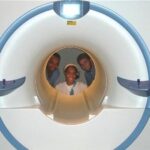Between the many words that form the English language, dyslexia is certainly not the easiest one to learn if you were born dyslexic. But, as a different way of thinking, Dyslexia is something you will certainly have to understand well if you wish to overcome its many challenges.
Today, dyslexia remains a challenge to the traditional notion of a learning disability. Even with the technological advances that allowed us to look at the functioning of the living human brain, such as Magnetic resonance imaging (MRI), and eletrocefalography (EGG), we are still learning much about Dyslexia’s contradictory signs. This signs represent simultaneous difficulties and proficiency in tasks and qualities we believe to be very close to each other and interdependent, such as intelligence and mental arithmetic’s or the ability of learning and recalling information.
Over a hundred years after doctors and scientists first noticed that some extremely bright people were unable to manage, ordinary tasks such as reading and writing, regardless of the time spent acquiring and training such skills, many questions still remain about how this learning disability can trigger both difficulties and different intelligences on people.
From the moment Dr. Hinselwood in 1895 first noticed the condition, which he would call word blindness and we today call dyslexia, up to now, dyslexia remains a symbol of inability. The Inability to write read and do so and so. The majority of people is still widely exposed to dyslexia’s negative aspects, often ignoring any positive one.
What we now know that these doctors did not know a hundred years ago is that: dyslexia, without doubt, differs from many other conditions considered as disability today, because it not only hinders people’s lives but seem to give them certain abilities much in demand in modern day complex societies.
The problem in labeling dyslexia only as a learning disability is that “Learning disability”, as a term, is extremely limited in its scope when it comes to describing dyslexia. It often, only refers to the problems connected with dyslexia and traditional learning process, schools, universities and evaluation processes; thus, excluding any abilities or qualities dyslexic people seems to enjoy when dealing with real life situations.
Much of today’s scientific data on dyslexia suggests that it does affect people in two different ways. Although dyslexia often affects people’s abilities to cope with many demands of a society so dependent on it’s written word as ours is today, it also seem to gift many of them with not only useful but also desirable qualities often in need in many modern-day professionals.
Two of these abilities often found in dyslexics that influence their problem solving skills are Lateral thinking and Picture thinking.
Lateral thinking and picture thinking are two qualities often found in dyslexics that are connected with what we call “problem solving skills. Interestingly, at school time and in many academic situations they both constitute significant problems that dyslexic students have no choice other than overcome. In adult life, these same skills are rendered indispensable when one faces situations such as taking critical decisions at work, shopping, selecting items and other day-to-day tasks.
My next article will look, in more detail, at how the abilities of thinking both in pictures and laterally can be seen as both problems and solutions depending on how we perceive them.
Sources
1. West TG. In the Mind’s Eye: Visual Thinkers, Gifted People With Dyslexia and Other Learning Difficulties, Computer Images and the Ironies of Creativity. Upd Sub. Prometheus Books; 2010.
2. M.D SS. Overcoming Dyslexia: A New and Complete Science-Based Program for Reading Problems at Any Level. 1st ed. Vintage; 2005.


